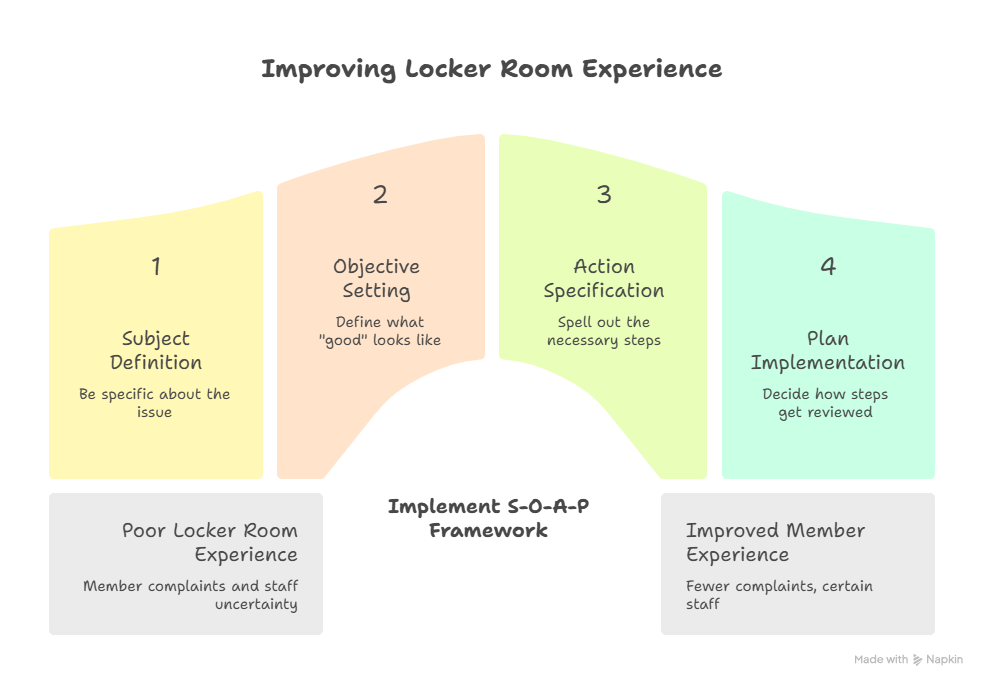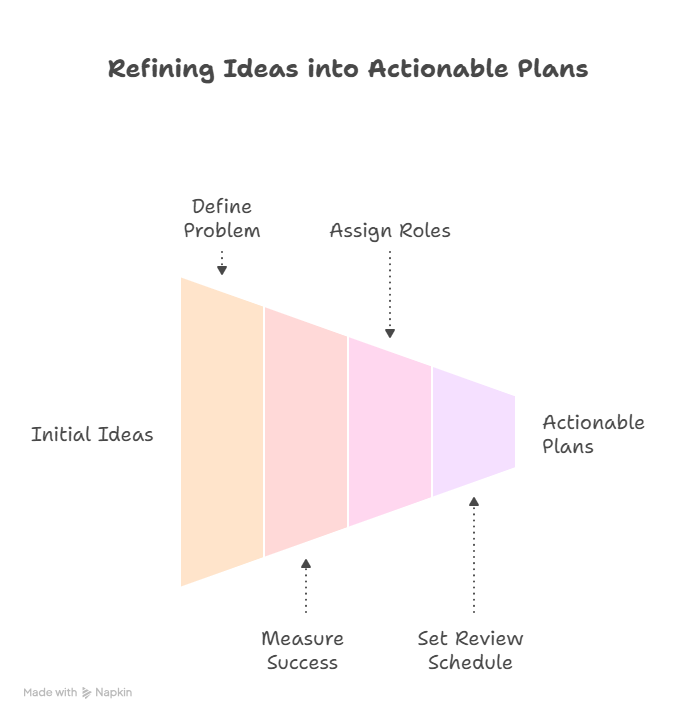
The S-O-A-P Framework: Locker Room Staffing and Checklists
This article is part of our nine-part series on AI prompt frameworks for private clubs, adapted from research developed by Khizer Abbas and the team at Superhuman AI.
Each framework in this series shows how managers can use AI in a structured way to solve everyday operational challenges. The S-O-A-P framework—Subject, Objective, Action, Plan—is one of the most practical tools in the set. It’s designed for those moments when you need to fix a process or improve service in a clear, measurable way.
Let’s take the locker room as an example.
Locker rooms rarely make it onto board agendas, but they shape a lot of the member experience. A missing towel after a round, showers not cleaned, attendants unsure of what “closing duties” actually mean—it adds up. Complaints creep in, staff feel uncertain, and managers are stuck chasing problems instead of staying ahead.

This is where S-O-A-P works well. Instead of asking AI something broad like “Help me improve the locker room”, you frame the issue step by step:
· Subject: Be specific about the issue. In this case, weekend coverage and cleanliness.
· Objective: Define what “good” looks like, ideally with numbers. For example, 95% audit pass rate and fewer than 2% member complaints.
· Action: Spell out what steps need to happen—hourly walkthroughs, log sheets, staff assignments.
· Plan: Decide how and when those steps get reviewed. Daily sign-offs, weekly complaint audits, and staff retraining if scores drop.
That’s the discipline S-O-A-P brings. It prevents you from getting generic outputs and keeps the focus on real improvements members can feel.
One of the biggest mistakes managers make when working with AI is starting with a vague request. If you just type “Create a staffing checklist” or “Fix locker room issues,” the output you receive will be generic. You might get a decent list of tasks, but they won’t be tailored to your club’s peak hours, staffing realities, or member expectations. That means you’ll end up rewriting and reworking the AI’s draft instead of moving forward with a clear plan.
The S-O-A-P framework forces you to do the hard thinking upfront. It asks: What exactly are we trying to fix? How will we measure success? Who will do what, and when will we review it? When managers take the time to answer these questions in the prompt itself, AI becomes far more useful. The outputs come back sharper, with checklists and plans you can actually implement tomorrow.

Getting the prompt right the first time saves staff hours, reduces frustration, and helps you move from “interesting ideas” to “workable solutions” faster. In the locker room example, that means fewer missed details, cleaner facilities, and fewer member complaints.
Here’s a prompt you can drop directly into your AI tool. Notice how the Subject, Objective, Action, and Plan are built right in:
“You are an experienced Clubhouse Operations Manager who has overseen locker room staffing and amenity services at several private clubs. You understand member expectations for cleanliness, service, and staff coverage.
Subject: Weekend locker room coverage and cleanliness standards.
Objective: Achieve at least a 95% cleanliness audit pass rate and reduce member complaints to under 2% per month.
Action: Design a staffing schedule that ensures peak coverage after 4pm on weekends, along with hourly walkthrough checklists, staff training notes, and manager sign-off procedures. Assign clear accountability to staff roles.
Plan: Provide a 7-day rollout schedule with daily manager reviews and a weekly review of logs and complaints to track progress.”
What I like about S-O-A-P is how it turns a messy problem into a stepwise process. It’s not theory—you get a plan that can be implemented, measured, and adjusted week by week. For locker rooms or anywhere else in the club, that kind of clarity is what keeps standards high. And the more precise you are in your prompts, the more likely you are to get solutions that work the first time, not after multiple rounds of trial and error.